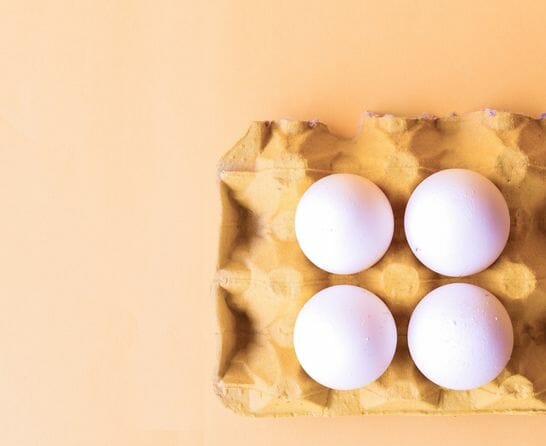Home > Female Body > Menstrual cycle > PMS Types: What You Need To Know


Gang, there’s a good chance you’re already familiar with PMS – far too familiar. It’s the chocolate-craving, mood-swinging, surprise-crying curse of the menstrual cycle. But did you know there are different PMS types? Because the demented clutch of symptoms plaguing you aren’t just random. Trust us on this one, it’s worth it.
Well, believe it or not, it’s actually a thing. And there are four PMS types to choose from. Say hello to: PMS-C, PMS-H, PMS-A, and PMS-D. Yes, they are fancy acronyms, but they’re so much more than that. And knowing which of the PMS types you enter the ring with every month can help you pack a better punch when battling your symptoms. And who doesn’t want that?
We’ve all been there. Laughing that turns to crying. Blistering, explosive, inexplicable rage. The sudden, unbearable itchiness of every piece of clothing. And then there’s the regular oh-crap-am-I-pregnant panic. Until the penny drops. The bloody, bloody penny. Yup, it’s your period.
Pre-Menstrual Syndrome is that combination of symptoms that occur during the Luteal phase of the menstrual cycle. And that’s all about ovulation and preparing your body for a possible bun. So, really, PMS depends more on when you finish ovulating rather than when your period starts. Typically, though, you can expect your period just a few days after the worst of this menstrual tyrant.
We all have a unique combination of PMS symptoms, and they can vary from month to month. That said, the most common symptoms include:
Aren’t we lucky? Because literally bleeding for three to eight days a month just isn’t enough fun, right?
Although we tend to recognize PMS as any combination of the above, symptoms can also be grouped into four different PMS types. Unfortunately, each type comes with its own set of challenges. It might even make the day you get your period seem like a relief! Luckily, though, narrowing down which kind of PMS hits you could help identify potential causes and manage your symptoms better.
Cookies. Ice Cream. Cookie dough ice cream. It doesn’t matter what it is, as long as it’s SUGAR! If you’re a PMS-C kinda gal, then feeling full is a pipe dream three days a month. And that’s because this PMS type comes with cravings for carbohydrates and sweets, along with an increased appetite in general.
So if you’ve ever found yourself knee-deep in a tub of Ben and Jerry’s, with no idea how you got there, this could be the answer. That said, for those with this PMS type, cravings really feel like a big problem. They might feel out of control or unable to function without a sweet treat. PMS-C is also typically associated with:
Well, here’s the thing. Low blood sugar may well be the cause of PMS-C. But, it could also be a symptom. And low blood sugar leaves you crying out for sugary goodness. So too, does the other possible cause: Low serotonin levels. Because ice cream makes everyone happier… For a while anyway.
And here’s why that might be an issue. PMS-C, according to some research, can affect the way your body handles sugar. Which means that during your PMS, that large amount of sugary, carby deliciousness could be casing higher Insulin levels as your body struggles to deal with it all.
Our old friends Estrogen and Progesterone, which are all over the place during your Luteal phase could be the culprits here. In conjunction with Insulin, the aforementioned hormones also help control your blood sugar. So it’s no surprise that it can also be a bit of a rollercoaster, and it’s all part of your cycle.
One more thing, gang. There’s also a link between Polycystic Ovary Syndrome and a decreased ability to lower blood sugar, so it might be worth having that checked out.
Yes, we say this all the time. But if you’re living with PMS-C, it could make all the difference. So here are some things to bear in mind:
These could also help with your PMS-C symptoms, as they can improve emotional symptoms and sleep issues:
We know — no one feels like moving much at this time of the month, but hear us out. Because it really can help.
Wait, isn’t hydration good? Yes! In fact, it’s one thing that might actually help this PMS type! Hyper-hydration, however, is another story. People who relate to PSM-H may experience:
If you’re anything like us, a shameless trouser unbuttoning is normal, and let’s face it, necessary at some point during your cycle. But extensive and uncomfortable bloating during PMS can be a sign of increased water retention, and it can be really, really uncomfortable. And here’s what might be causing that trouser shrinkage:
If you’re living with PMS-H, there are some specific and targeted solutions to help rid you of that excess liquid:
These wonder vitamins and minerals can all help reduce bloating:
Now, we know that’s much easier said than done. But these small changes really do add up!
Knowing whether you have excess Estrogen can be invaluable for all sorts of things. But that goes double when it comes to managing your PMS symptoms.
Yup. Just when we thought the physical symptoms were bad enough, PMS-A comes along to remind us just how emotionally draining the whole thing can be. If you’re someone who primarily suffers from this PMS type, you may well relate to the following:
PMS-A is typically associated with, wouldn’t you know it, a hormone imbalance. An excess of Estrogen combines with a Progesterone deficiency in the perfect storm of heightened anxiety and a decreased ability to regulate your nerves. But here’s the really fun bit, gang. If you already suffer from anxiety, PMS may make your symptoms even worse.
Anxiety can be debilitating. With everything you deal with in a month, what you don’t need is extra stress making it all a bit too much. And while you might just live with your emotional symptoms during PMS, because that’s just what we do, you don’t have to. There are things you can do to reduce that anxiety. Especially if there are underlying hormone imbalances at play!
Yes, it’s time for another shameless plug, but that doesn’t mean it’s not a good idea. The more knowledge you have of your hormones, the better equipped you are to deal with all they throw at you. And here’s how to do that:
Even if your anxiety is due to hormone imbalance, taking care of your mental health is a big part of managing your symptoms. So here are some things that can help you do that:
The D word. It’s scary. And daunting. And it’s so prevalent, it’s one of the specific PMS types. So if you struggle to get out of bed during a certain time of the month, no matter how much you want to, this is for you. The symptoms most associated with PMS type-D are:
In contrast to PMS-A, PMS-D is thought to be related to low Estrogen levels. This imbalance between Estrogen and Progesterone can make for some real funky moods, and is seen in lots of reproductive depression. However, as with PMS-A, pre-existing depression or mood disorders can be exacerbated by PMS, making the symptoms even more unbearable.
Yes, we know we’re starting t sound like a broken record right now, but that’s okay. Because that’s how important tracking your hormones can be. So, yes, you now get yet another reminder about the Hormona app!
Good nutrition can actually work wonders for low Estrogen:
These supplements for PMS-D can help with mood and sleep issues:
Right, so now you know. Or… Maybe you don’t. Symptoms can vary massively from person to person, and you might not always connect the dots between the way you’re feeling and PMS. The four PMS types are collections of symptoms that often occur together and might indicate an underlying problem or hormone imbalance.
You might also experience a collection of symptoms covering one, two, or all of the PMS types. One thing’s for sure about PMS — it’s never simple. But, tracking your symptoms and working out your personal PMS journey is a good start to combatting that monthly nightmare.
If, though, your PMS symptoms are affecting your quality of life in any way whatsoever, please talk to a healthcare type.
Disclaimer: This website does not provide medical advice. The information, including but not limited to, text, graphics, images and other material contained on this website are for informational purposes only. No material on this site is intended to be a substitute for professional medical advice, diagnosis, or treatment. Always seek the advice of your physician or other qualified healthcare provider with any questions you may have regarding a medical condition or treatment, and before undertaking a new health care regimen, and never disregard professional medical advice or delay in seeking it because of something you have read on this website.

-


Dr Singh is the Medical Director of the Indiana Sleep Center. His research and clinical practice focuses on the myriad of sleep.

Understanding the female libido Before we can answer, “Does progesterone increase sex drive?” it’s important to gain a better understanding of what a “sex drive” means. The female libido or sex drive is how much you desire sexual activity. Every

Why am I so hungry before my period? Women who experience an increased appetite before period starts can feel frustrated that they’re craving foods they don’t normally eat. You may be wondering, “Why do I eat so much before my

Understanding cycle syncing workouts Did you know that evidence shows a link between the impact of exercise and menstrual cycle phases in women? It’s true. Women are at a higher risk of foot and ankle injury during workouts than men,
Hormona© 2025, All Rights Reserved
Privacy Overview
| Cookie | Duration | Description |
|---|---|---|
| cookielawinfo-checkbox-analytics | 11 months | This cookie is set by GDPR Cookie Consent plugin. The cookie is used to store the user consent for the cookies in the category "Analytics". |
| cookielawinfo-checkbox-functional | 11 months | The cookie is set by GDPR cookie consent to record the user consent for the cookies in the category "Functional". |
| cookielawinfo-checkbox-necessary | 11 months | This cookie is set by GDPR Cookie Consent plugin. The cookies is used to store the user consent for the cookies in the category "Necessary". |
| cookielawinfo-checkbox-others | 11 months | This cookie is set by GDPR Cookie Consent plugin. The cookie is used to store the user consent for the cookies in the category "Other. |
| cookielawinfo-checkbox-performance | 11 months | This cookie is set by GDPR Cookie Consent plugin. The cookie is used to store the user consent for the cookies in the category "Performance". |
| viewed_cookie_policy | 11 months | The cookie is set by the GDPR Cookie Consent plugin and is used to store whether or not user has consented to the use of cookies. It does not store any personal data. |
